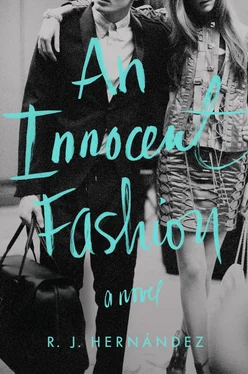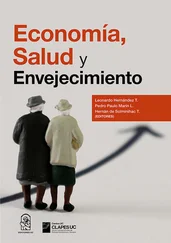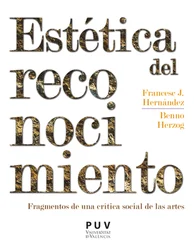I WAS TEN YEARS OLD THE FIRST TIME MY MOTHER DRAGGED me along to her nail appointment at a local salon called Angelina’s — the one regular indulgence of her otherwise unglamorous existence. There, beneath an unfading waft of acetone, against the dramatic soundtrack of the afternoon soap opera, I stumbled upon Régine . Around our house, the only magazines were the tabloids my mother piled up by the bathroom toilet, with features titled, “Your favorite stars look just like you without makeup!” Headlines always involved the latest cheating scandals and speculation over surgical procedures, while inside one was sure to find several pages dedicated to which rich and famous women had worn which unflattering dress to some party or award show: on the whole, every kind of stomach-turning, and printed on bad paper.
But Régine reminded me of the illustrated fairy tales I used to check out from the school library. Like all fairy tales, with their stock characters and predictable endings, the magazine had its fair share of faults, not least of which were the celebrity profiles it proudly touted on the front cover. What did it matter to me if the star of some forgettable summer blockbuster had birthed yet another child with her second husband, or that it took her just four months to work off the pregnancy fat? It didn’t matter to me, either, that anybody had attended this or that party, or that they had worn Gucci for the first half, then — surprise! — changed into Dior. And my one enduring question was never answered: What was an anti-wrinkle serum, and why were so many pages dedicated to them?
Once I got past these minor irritations, however, I flipped through one breathtaking picture after another, fingers trembling, my heart throbbing with longing. Régine ’s power wasn’t merely in the beauty of its models, with their long endless legs and little noses that hit the light just right; it was in the whole world they lived in. They could be fanning themselves beneath an arch in a Moorish palace, or frolicking on the beach of some private Caribbean island, yet they were always part of a picture that was perfect and complete — color-coordinated by somebody, with nothing ugly or wrong to mess it up.
Later, as an art history major at Yale, this was what I would love about all my favorite paintings, whether by Renoir or Van Gogh or Pollock. In the space of a canvas, they could create a whole world that was beautiful, and made sense . The best fashion spreads were just like that, only better because they were photographs, taken from actual life; and even though I knew they were staged and airbrushed, they still seemed real , as if I could set out looking for the perfect world they showed and find it. I had inexplicably imagined the Régine office as one of these worlds — women majestically lounging about in magnificent long gowns, lacing up each other’s embroidered corsets, their swanlike necks dripping with the world’s finest jewels.
When at last someone entered the foyer through the glass double doors, she wasn’t wearing a ball gown, but rather an ash-gray sheath and matching sling-back stilettos, and holding a copy of the current Vogue issue while she bit into a green apple.
“Ms. Walker!” I exclaimed.
She looked up at me for one second (that was one second longer than Ms. Christian Dior, from the elevator) and uttered, simply, “No,” before calling the elevator and returning to her magazine.
“I’m sorry.” I recoiled like a gustless paper party horn. “I’m just waiting for Ms. Walker.”
Evidently she had been looking forward to her apple all morning; a series of crunching noises was her response. When she disappeared a second later into the elevator, the fruit was no more than a fragile stem. She tucked it like a bookmark into her magazine, and the doors closed.
A second woman appeared after five minutes (black secretary blouse, black pencil skirt, black kitten heels — not Ms. Walker), and a third another five minutes after her (gray silk jumpsuit, black stilettos — also not Ms. Walker). As I waited, I mentally sifted through all the answers I had practiced the night before, like index cards before a midterm: my accomplishments and my strengths and my career goals, all of which I would share in a humble yet confident tone while also reminding them I went to Yale, Yale, Yale at every opportunity. The only other interviews I’d had were for library posts in high school and college, and both times I’d just entered with a big smile and the fresh-faced ease of a person who has just returned from a summer holiday. But this wasn’t just any interview — it was the most important interview of my life. When Ms. Sabrina Walker asked me about my strengths I was prepared to bubble up, like champagne from a just-uncorked bottle, about my imagination and my great eye for beauty — then, before I came across as too frothy, I would bow my head with a sober crinkle of my brows and add that I also knew how to “get things done,” that I was smart, and resourceful, and had received high marks from all of my professors at Yale .
In my mind, Ms. Walker would nod her head agreeably at this, and smile. Even after observing several of her colleagues in dark monochrome, I inexplicably maintained my belief that, like an angel, she would shine very bright — the hallowed gatekeeper who would admit me to my fashionable destiny. When, after a series of my well-pitched responses, she asked me why I wanted to work at Régine , I would reply, “Because my life’s purpose is to make the world more beautiful,” and she would open her arms to me, with a pearl-like tear in her eye, and say, “Come, child: you belong here,” and the cream-colored lobby would glow like blond hair in a shampoo commercial, and a wreath of laurel would descend from the air onto my head, while around the world everybody laid down their guns and cancelled the bombings and all the hungry children got an organic fruit basket with my name on the calligraphed gift tag.
I TOOK A MOMENT TO REARRANGE MY PINK TIE, WHICH WAS held by a tortoiseshell pin to a crisp white shirt curtained by the velvet lapels of my suit. My younger self would have been amazed. Years of devotion to the crowning principles of Régine had inspired an insatiable pining for beautiful new clothes; growing up, I wanted a suit most of all — the standard, it seemed, for any man who wished to love a Régine -caliber woman. I didn’t dare ask for such a frivolity, however, at least not within earshot of my father, whose only aesthetic indulgence was “extra-soft” toilet paper and whose single biggest complaint about America was the insufferable flamboyance of its men. He possessed extremely traditional Hispanic views of masculinity, believing that a man’s worth was determined by his strength and earning power, and a woman’s by her merit in the domestic sphere. Consequently, any man who defied these conventions (his tirades against pretty-boy actors and limp-wristed television hosts were particularly pointed) must be a menace and a bad Catholic and probably a “ mariposa ”—a butterfly, a faggot.
Although she expressed only a passive tolerance of his perspective, my coupon-clipping mother shared his view of new clothes as unnecessary, at least in light of more pressing expenditures on unglamorous things like gas and weekly groceries, the importance of which I hoped she might one day overlook so that I could have a dress shirt, or a necktie, or even just a pair of colorful socks. My wardrobe was sourced entirely from the clearance bin at the local discount mart, from which the most common takeaways were elastic shorts and plastic-wrapped packs of “assorted” three-for-one T-shirts.
A lucky break came toward the end of seventh grade, when Tío Domingo announced he would be marrying (pregnant) Cecilia Maria in June — next month! — and that he hoped my parents would be his Best Man and Matron of Honor, and would they mind having the reception at our house? The imposition sent my mother scrambling all over town, squawking about flowers and bridesmaids’ dresses and a tent for the backyard, all the while complaining that her brother-in-law never did anything right and he was going to ruin Cecilia Maria’s credit like he did to his first wife’s. Not to mention the inconsiderate suddenness of hosting a shotgun wedding, the cost of which she had hardly budgeted for. She had to buy shoes! a dress! a necklace! and — a suit for me.
Читать дальше












